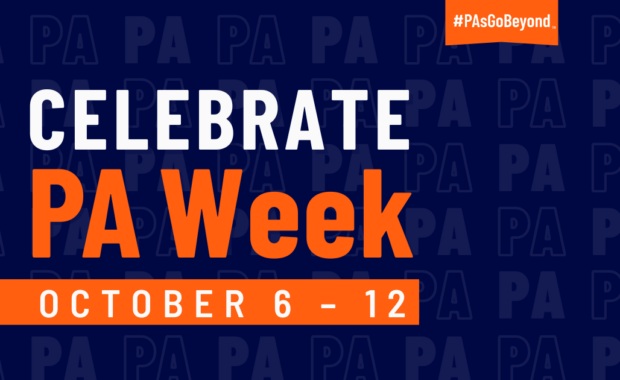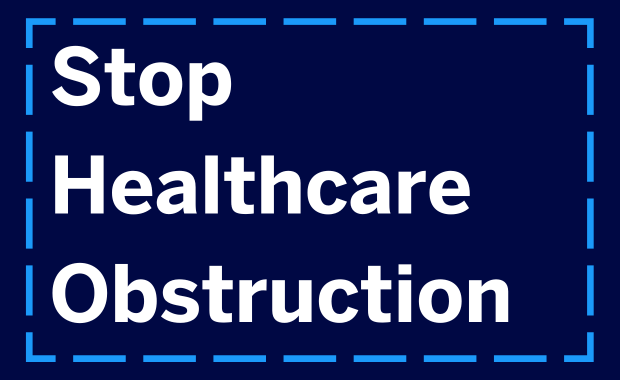Barriers to Providing Care Improving, But More Work Remains
PAs Experience Impediments to Practice in Several Areas
July 16, 2018
By AAPA Research Department
By 2030, the U.S. may face a shortage of 42,600 to 121,300 physicians, according to the 2018 projections established by the Association of American Medical Colleges (AAMC). Within their model, they found that general population growth coupled with the aging population accounts for most of the projected shortfall. The U.S. Census Bureau projects that by 2030, 24 percent of the population will be age 65 and older, accounting for 86 million persons.1 Having PAs practice at the top of their education and experience can increase access to high quality care for even the most complex patient.2 However, it is important to understand the barriers PAs face in providing care, and how those barriers may be changing over time.
To address the barriers to care PAs were experiencing, AAPA Research took a closer look at two research studies from 2015 and 2017. The results showed that barriers to care remain a substantial impediment to practice, but significant improvements are occurring in most areas assessed within the surveys.
Laws and Regulations
Most states have some laws and regulations in place that impede PAs from practicing at the top of their education, training and experience. These laws and regulations impact a large percentage of PAs. Almost two in five PAs (38%) believe that current state laws and regulations occasionally to almost always impede them practicing at the top of their education and experience (Table 1). As of June 2018, seven states still have not granted PAs full prescriptive authority.3
AAPA advocates for Optimal Team Practice (OTP), which calls for laws and regulations that:
- Emphasize PAs’ commitment to team practice;
- Authorize PAs to practice without an agreement with a specific physician—enabling practice-level decisions about collaboration;
- Create separate majority-PA boards to regulate PAs, or give that authority to healing arts or medical boards that have as members both PAs and physicians who practice with PAs; and,
- Authorize PAs to be directly reimbursed by all public and private insurers.
OTP has not been enacted in any of the states, although several states have enacted some of the laws and regulations in the four OTP pillars.
A recent situation in Wyoming serves as an example of why requiring an agreement with a specific physician in order to practice can be a barrier to care. Bob Cummings practices in a rural health clinic in Wyoming. Despite PA Cummings 27 years in practice and his role as the sole provider within his clinic, no appointments were allowed for more than a week when his collaborating physician died suddenly. Although Wyoming law states that PAs exercise autonomy in medical decision-making, the state requires an agreement with a specific physician in order to practice. More information about his experiences can be found here.4
Many federal laws also create barriers to providing quality care. Currently PAs are the only healthcare professionals prohibited from directly billing Medicare for their services. As a result, there is an increased administrative burden and it may require the creation of employment relationships for billing purposes. Other federal laws creating a barrier include the inability to order therapeutic diabetic shoes as well as the inability to order home healthcare or manage the patient’s home healthcare plan, despite being able to provide the home healthcare.
In addition, the Federal Employee’s Compensation Act will not permit PAs to diagnose and treat federal employees who are injured on the job, ultimately reducing access to care for those federal employees who rely on PAs as their principal healthcare professional. Laws and regulations at the state and federal level do indeed create many unnecessary barriers to care.
Insurance Rules and Regulations
In addition to state and federal laws and regulations that create barriers to a PA practicing to the top of their license, insurance rules and regulations create them as well. Almost two in five PAs (38%) believe that current insurance rules and regulations impeded practicing to the top of their license occasionally, very frequently, or almost always (Table 1). Examples of these types of rules and regulations include preventing PAs from being identified on a claim form as having rendered a service, omission from provider directories, and exclusion from Primary Care Provider status. Some health insurers express these restrictive policies explicitly, while others merely have no written policy in their payer manuals regarding these abilities and PAs, the ambiguity of the written rules allowing varying interpretations of organizational policy.
Table 1. Impediments to Practicing at the Top of the License
| Impediments | Total | Never | Seldom | Occasionally | Very Frequently | Almost Always |
| N | % | % | % | % | % | |
| Current state laws and regulations | 530 | 27.5 | 34.3 | 24.0 | 8.3 | 5.8 |
| Current insurance rules and regulations | 531 | 25.2 | 27.7 | 32.0 | 12.2 | 2.8 |
| My employers’ policies | 533 | 33.8 | 27.6 | 27.0 | 8.1 | 3.6 |
Question: How much do the following impede your practicing to the top of your license?
Barriers remain, but many are improving
Several barriers to achieving the best outcome for patients are occurring with less frequency than they were in 2015. Regarding restrictive laws and regulations, 75.6% of PAs in 2015 cited this as arising sometimes, very frequently, or almost always; in 2017, that number decreased to 35.6%. In 2015, 53.3% of PAs indicated that, at least sometimes, uncertainty about PA role or scope of practice was a barrier to achieving optimal patient outcomes; this improved to 23.8% in 2017 (Table 2). Communication with patients has also improved: in 2015, 49.8% of PAs reported this barrier occurred at least sometimes, versus 42.8% in 2017.
On the other hand, large patient load is more frequently a barrier to care than it was in 2015, and patient nonadherence has significantly worsened since 2015. From 2015-2017 respondents indicating patient nonadherence was either very frequently or almost always a barrier increased 15 percentage points (20% in 2015 vs. 35% in 2017) (Table 2).
Table 2. Frequency of Barriers to Optimal Patient Outcomes
| Barrier | 2015 | Total | Never | Seldom | Sometimes | Very Frequently | Almost Always |
| 2017 | Total | 1
Almost Never |
2
|
3
Sometimes
|
4
|
5 Almost always |
|
| Year | N | % | % | % | % | % | |
| Uncertainty about PA role or scope of practice | 2015 | 5,179 | 5.3 | 41.3 | 45.9 | 6.7 | 0.7 |
| 2017 | 516 | 57.0 | 19.2 | 16.5 | 5.6 | 1.7 | |
| Restrictive laws and regulations | 2015 | 5,174 | 4.9 | 19.5 | 40.7 | 23.8 | 11.1 |
| 2017 | 524 | 33.2 | 31.5 | 23.9 | 8.4 | 3.1 | |
| Large patient load | 2015 | 5,009 | 19.1 | 42.5 | 28.9 | 7.6 | 1.9 |
| 2017 | 528 | 18.4 | 23.1 | 35.0 | 14.8 | 8.7 | |
| Lack of continuity of care | 2015 | 5,183 | 7.0 | 26.1 | 41.3 | 18.8 | 6.8 |
| 2017 | Not asked | ||||||
| Limited time with patients | 2015 | 5,163 | 6.5 | 28.8 | 42.0 | 18.4 | 4.3 |
| 2017 | 528 | 16.1 | 27.7 | 34.5 | 15.2 | 6.6 | |
| Patient nonadherence to provider recommendation | 2015 | 4,703 | 18.2 | 28.1 | 34.5 | 15.5 | 3.7 |
| 2017 | 533 | 4.1 | 11.1 | 50.3 | 27.8 | 6.8 | |
| Poor communication among clinicians | 2015 | 5,174 | 29.9 | 41.3 | 21.6 | 5.9 | 1.3 |
| 2017 | 531 | 23.7 | 34.5 | 33.0 | 6.4 | 2.4 | |
| Inadequate hospital or practice protocol | 2015 | 5,173 | 1.5 | 7.7 | 47.7 | 38.2 | 4.9 |
| 2017 | 465 | 35.7 | 30.5 | 22.8 | 8.8 | 2.2 | |
| Reimbursement issues | 2015 | 5,052 | 16.1 | 40.5 | 30.3 | 10.5 | 2.7 |
| 2017 | 494 | 28.9 | 29.4 | 27.9 | 10.9 | 2.8 | |
| Poor communication between patient and clinician | 2015 | 5,170 | 9.2 | 41.0 | 38.7 | 9.4 | 1.7 |
| 2017 | 532 | 32.3 | 24.8 | 37.0 | 4.1 | 1.7 | |
Question: 2017 PA Practice Survey: On a scale of 1 to 5, how often do the following barriers arise as you tried to get the best outcome for your patients?
Question: 2015 AAPA National Survey: As a member of the healthcare team, how often do the following barriers arise as you tried to get the best outcome for your patients; Options included: never, seldom, sometimes, very frequently, almost always, and I prefer not to answer.
While several PA barriers have been reduced since 2015 based on reports to AAPA from PAs, substantial barriers remain that impede PAs from practicing to the top of their education and experience.
More Resources
Authors are Tim McCall, PhD, AAPA’s manager of research, and Noël Smith, MA, AAPA’s senior director of research. Contact them at [email protected].
References
- Colby, SL, Ortman, JM, Projections of the size and composition of the U.S. population: 2014 to 2060. Current Population Reports, P25-1143, U.S. Census Bureau. https://www.census.gov/content/dam/Census/library/publications/2015/demo/p25-1143.pdf. Published March 2015. Accessed June 18, 2018.
- American Academy of PAs. PAs Can Bring Cost-Effective Care to Complex Patients.https://www.aapa.org/news-central/2018/04/pas-can-bring-cost-effective-care-complex-patients/. Published April 2018. Accessed June 18, 2018.
- American Academy of PAs. The Six Key Elements of a Modern Practice Act. https://www.aapa.org/wp-content/uploads/2017/05/6_KE_Chart_5-5-17.pdf. Published June 2018. Accessed June 22, 2018.
- American Academy of PAs. Wyoming PA Unable to Care for Patients. https://www.aapa.org/news-central/2017/12/wy-pa-unable-care-patients-physician-death/. Published December 2017. Accessed June 22, 2018.
About the data
Data from 2015 were collected from May through September 2015 as part of the 2015 AAPA National Survey, which was sent to over 49,000 PAs in AAPA’s database who had not opted out of communication. Over 6,070 PAs responded, for a margin of error of 1.05%. Data from 2017 were collected at AAPA 2017 in a survey available to all attendees, with a subsequent survey sent to 2,000 PA students and 6,000 PAs in June 2017. A total of 1,597 PAs responded to the survey. The overall margin of error is +/- 2.44% at the 95% confidence level. Response rates and margins of error vary by section and breakout. Data represent clinically practicing PAs, regardless of hours worked.
Thank you for reading AAPA’s News Central
You have 2 articles left this month. Create a free account to read more stories, or become a member for more access to exclusive benefits! Already have an account? Log in.



